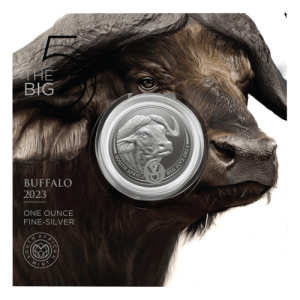Gold has had a remarkable year closing 8 of the first 10 months higher than it began and as we pointed out in a previous newsletter gold has also closed with nearly 40 new all-time highs in 2024 alone. To start its 11th month of the year, gold saw a significant pull back of 9.07% from its current intraday trading all-time high of $2790.07 USD/oz down to a monthly low of $2536.89 USD/oz. Since November 10th, gold has made a strong recovery gaining 6.59% at time of writing to reclaim the $2700 USD/oz mark, currently sitting at $2704.10 USD/oz. This has, of course, been driven by soaring gold demand as the world continues to worry about the safety of the dollar amidst international sanctions being levied by the West to countries in the East. Not only this, but the weaponization of the dollar has made the USD gain increased strength relative to other national currencies creating massive financial threats to those countries that are seeing their currency devalue the fastest. This is where gold and subsequently silver have come in to bridge the gap and provide foundational strength to a country’s balance sheet as their currency loses further purchasing power at an accelerated rate.
With that said, since mid-September the United States Dollar has seen an increase of 7.25% (DXY Stock Ticker Symbol), which has forced a further reallocation of funds toward gold by other countries causing consumption of the shiny yellow metal to swell 5% this quarter to over $100 billion USD in Q3 for the first time in history, according to the World Gold Council. The increase pushed volumes of consumed gold above 1,313 tonnes, which the World Gold Council emphasized “was underpinned by stronger investment flows from the West, including more higher-net-worth individuals”. According to John Reade, the council’s chief marketing strategist, “Demand has switched through the course of this year from predominantly emerging-markets Over the Counter (OTC) buying, tp high-net-worth individuals, toward very much more Western OTC buying.” Eastern buying earlier in the year was driven by BRICS+ nations shifting prioritizes to settling mutual trade in gold and national currencies rather than the United States Dollar. This led to record purchases of gold and silver from India, China, and Russia along with other smaller members of BRICS+ and countries outside of the bloc. For almost the entire year, the West sat on the sidelines as prices continued to crawl higher and higher until the writing on the wall became clear and they could no longer justify waiting as inflation has remained persistently higher than the public was led to anticipate.
When speaking about inflation, it wouldn’t be right if we didn’t mention the most recent policy announced by Trudeau that Canadians can expect to kick in April 1st of 2025. It was announced that Canadians whose individual income was less than $150K would be eligible to receive a $250 check from the government. Without even touching on the minimal impact that $250 CAD would have for most families given the cost of gas and groceries, this policy, as seen with other stimulus bills passed through lockdowns is going to be incredibly inflationary as the money being handed out is created out of thin air; ultimately further diluting the currency supply causing prices to rise. When breaking down the math, it becomes more obvious why stimulus is on the surface received with a cheer of “YAY! Free money” without the long-term consideration of how much extra that “free money” is going to cost you as inflation ramps up and your dollars don’t take you nearly as far. As they say, there is no such thing as a free lunch.
In 2023, based on tax filings, there were 917,150 individuals of the 20,220,000 working Canadians that earned over $150,000 CAD; this represents 4.53% of the Canadian workforce. The other 95.47% or 19,302,850 workers earned less than $150,000 CAD individually. If all 19,302,850 workers were to qualify for the $250 handout, this in essence would lead to the creation of $4,825,712,500 CAD. Of course, when these bills are passed there ends up being fine print that removes a portion of workers from eligibility, but even still, if only 50% of the nearly 19.4 million workers end up with eligibility, we are looking at an injection of nearly $2.5 billion CAD into the currency supply: billions more dollars chasing the same number of goods. Taking this one step further, if trade wars intensify under Trump’s presidency as many are predicting due to aggressive tariffs, this would cause the supply of goods to decrease meaning there will be even more dollars chasing even fewer goods: the perfect inflationary storm. And while many in the general public may dislike leaders of the world, they certainly are not stupid, and if they are, they are surely being fed what is coming ahead of time because the rapid accumulation of gold and silver while both metals were generally considered cheap has been astounding.
To finish this newsletter off, we want to finish by highlighting concrete evidence that China and other countries in the East are anticipating an even larger influx of gold and silver trading than we have seen to date. Which would lead people to believe they also anticipate the price of both to continue to rise and for gold and silver to continue to become more prominent in global finance.
It was announced late in October that the Hong Kong Airport had initiated plans to boost the capacity of their vault to be able to hold 1000 tonnes of gold. This would be an increase of 566.67% up from the previous vault capacity of 150 tonnes of gold. The main reason cited by the airport was “[to ensure they could] support the city’s ambitions of becoming a global trading hub for the precious metal amid fierce competition from Singapore.” In comparison, the new facility built near Singapore’s airport can hold up to 500 tonnes of gold and 15,000 tonnes of silver.
Showing proof of concept to the increased vault size was the UAE. It was recently reported that in 2023, the UAE surpassed the United Kingdom in becoming the 2nd largest gold trading hub worldwide, trading over $129 billion USD worth of gold; an increase of 36% from 2022. This further emphasizes the reality of Eastern countries ditching the United States Dollar in trade and turning their attention to sound money, gold and silver, as the bedrock of the future of BRICS+ nations and those countries surrounding them. A reminder that 34 countries are currently in the application process as they seek membership and it is no secret that many of these countries are also commodity rich, prioritizing the expansion of both silver and gold reserves.
 Hi,
Hi,












